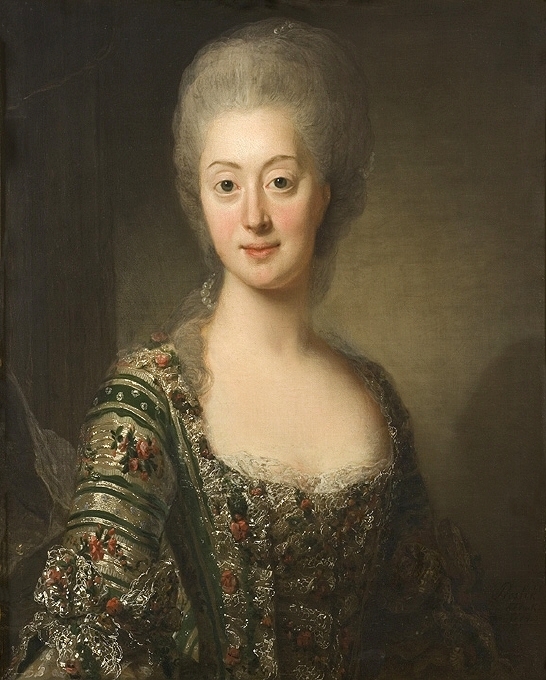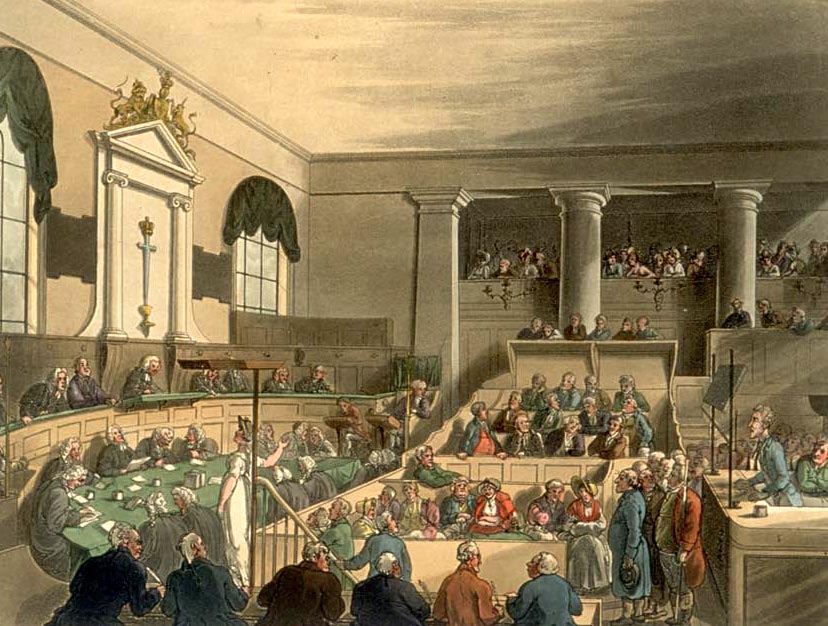|
Svea Court Of Appeal
Svea Court of Appeal (), located in Stockholm, is one of six appellate courts in the Swedish legal system, as well as the oldest Swedish court currently in use (the Supreme Court being constituted only in 1789, over 150 years later). It is located in the Wrangel Palace, on Riddarholmen islet in Gamla Stan, the old town of Stockholm. History The Svea Court of Appeal was founded in 1614 and was the highest court in Sweden until 1789, when the Supreme Court of Sweden was established. Among people sentenced to death by the court was Nicolaus Olai Campanius, convicted of being a Catholic, and Jacob Johan Anckarström, convicted of the assassination of Gustaf III of Sweden. Buildings The Svea Court of Appeal is located in several buildings on Riddarholmen. Apart from the Wrangel Palace, which is the main building, it also has divisions in i.a. the Hessenstein Palace, the Stenbock Palace and the Schering-Rosenhane Palace. See also * Courts of appeal in Sweden The courts of a ... [...More Info...] [...Related Items...] OR: [Wikipedia] [Google] [Baidu] |
Stockholm
Stockholm (; ) is the Capital city, capital and List of urban areas in Sweden by population, most populous city of Sweden, as well as the List of urban areas in the Nordic countries, largest urban area in the Nordic countries. Approximately 1 million people live in the Stockholm Municipality, municipality, with 1.6 million in the Stockholm urban area, urban area, and 2.5 million in the Metropolitan Stockholm, metropolitan area. The city stretches across fourteen islands where Mälaren, Lake Mälaren flows into the Baltic Sea. Outside the city to the east, and along the coast, is the island chain of the Stockholm archipelago. The area has been settled since the Stone Age, in the 6th millennium BC, and was founded as a city in 1252 by Swedish statesman Birger Jarl. The city serves as the county seat of Stockholm County. Stockholm is the cultural, media, political, and economic centre of Sweden. The Stockholm region alone accounts for over a third of the country's Gros ... [...More Info...] [...Related Items...] OR: [Wikipedia] [Google] [Baidu] |
Gustaf III Of Sweden
Gustav III (29 March 1792), also called ''Gustavus III'', was King of Sweden from 1771 until his assassination in 1792. He was the eldest son of King Adolf Frederick and Queen Louisa Ulrika of Sweden. Gustav was a vocal opponent of what he saw as the abuse of political privileges seized by the nobility since the death of King Charles XII in the Great Northern War. Seizing power from the government in a coup d'état, called the Swedish Revolution, in 1772, that ended the Age of Liberty, he initiated a campaign to restore a measure of royal autocracy. This was completed by the Union and Security Act of 1789, which swept away most of the powers exercised by the Swedish Riksdag of the estates during the Age of Liberty, but at the same time it opened up the government for all citizens, thereby breaking the privileges of the nobility. A believer in enlightened absolutism, Gustav spent considerable public funds on cultural ventures, which were controversial among his critics, as w ... [...More Info...] [...Related Items...] OR: [Wikipedia] [Google] [Baidu] |
Buildings And Structures In Stockholm
A building or edifice is an enclosed Structure#Load-bearing, structure with a roof, walls and window, windows, usually standing permanently in one place, such as a house or factory. Buildings come in a variety of sizes, shapes, and functions, and have been adapted throughout history for numerous factors, from building materials available, to weather conditions, land prices, ground conditions, specific uses, monument, prestige, and aesthetic reasons. To better understand the concept, see ''Nonbuilding structure'' for contrast. Buildings serve several societal needs – occupancy, primarily as shelter from weather, security, living space, privacy, to store belongings, and to comfortably live and work. A building as a shelter represents a physical separation of the :Human habitats, human habitat (a place of comfort and safety) from the ''outside'' (a place that may be harsh and harmful at times). buildings have been objects or canvasses of much architecture, artistic expression. ... [...More Info...] [...Related Items...] OR: [Wikipedia] [Google] [Baidu] |
Government Buildings In Sweden
A government is the system or group of people governing an organized community, generally a state. In the case of its broad associative definition, government normally consists of legislature, executive, and judiciary. Government is a means by which organizational policies are enforced, as well as a mechanism for determining policy. In many countries, the government has a kind of constitution, a statement of its governing principles and philosophy. While all types of organizations have governance, the term ''government'' is often used more specifically to refer to the approximately 200 independent national governments and subsidiary organizations. The main types of modern political systems recognized are democracies, totalitarian regimes, and, sitting between these two, authoritarian regimes with a variety of hybrid regimes. Modern classification systems also include monarchies as a standalone entity or as a hybrid system of the main three. Historically prevalent forms ... [...More Info...] [...Related Items...] OR: [Wikipedia] [Google] [Baidu] |
Appellate Courts
An appellate court, commonly called a court of appeal(s), appeal court, court of second instance or second instance court, is any court of law that is empowered to hear a case upon appeal from a trial court or other lower tribunal. Appellate courts other than supreme courts are sometimes named as Intermediate appellate court. In much of the world, court systems are divided into at least three levels: the trial court, which initially hears cases and considers factual evidence and testimony relevant to the case; at least one intermediate appellate court; and a supreme court (or court of last resort) which primarily reviews the decisions of the intermediate courts, often on a discretionary basis. A particular court system's supreme court is its highest appellate court. Appellate courts nationwide can operate under varying rules. Under its standard of review, an appellate court determines the extent of the deference it will give to the lower court's decision, based on wheth ... [...More Info...] [...Related Items...] OR: [Wikipedia] [Google] [Baidu] |
Courts In Sweden
A court is an institution, often a government entity, with the authority to adjudicate legal disputes between Party (law), parties and Administration of justice, administer justice in Civil law (common law), civil, Criminal law, criminal, and Administrative law, administrative matters in accordance with the rule of law. Courts generally consist of Judge, judges or other judicial officers, and are usually established and dissolved through legislation enacted by a legislature. Courts may also be established by constitution or an equivalent constituting instrument. The practical authority given to the court is known as its jurisdiction, which describes the court's power to decide certain kinds of questions, or Petition, petitions put to it. There are various kinds of courts, including trial courts, appellate courts, administrative courts, international courts, and tribunals. Description A court is any person or institution, often as a government institution, with the authori ... [...More Info...] [...Related Items...] OR: [Wikipedia] [Google] [Baidu] |
Stenbock Palace
The Stenbock family is an old Swedish noble family, of which one younger branch established itself in Finland and another younger branch in Estonia, both of them in the mid 18th century, of which the first was entered into the rolls of the Finnish House of Nobility and the latter received both Estonian and Russian letters of nobility. Notable members * Ebba Stenbock (15??–1614) *Catherine Stenbock (1535–1621) * Gustaf Otto Stenbock (1614–1685) * Magdalena Stenbock (1649–1727) *Hedvig Eleonora Stenbock (1658–1714) *Magnus Stenbock (1664–1717) *Eric Stenbock (1858–1895) Gallery File:COA_family_sv_Stenbock_(grevliga_ätten).svg, Arms of the Swedish counts Stenbock, the main branch of the family File:Stenbok-fermor 11-34.jpg, Arms of the Stenbock-Fermor branch of the family File:KatarinaStenbock.JPG, Catherine Stenbock File:Gustaf Otto Stenbock.jpg, Gustaf Otto Stenbock File:Magnus Stenbock, 1665-1717.jpg, Magnus Stenbock File:Eric Stenbock.jpg, Eric Stenbock File:R ... [...More Info...] [...Related Items...] OR: [Wikipedia] [Google] [Baidu] |
Hessenstein Palace
Hessenstein is a mountain of Bavaria, Germany Germany, officially the Federal Republic of Germany, is a country in Central Europe. It lies between the Baltic Sea and the North Sea to the north and the Alps to the south. Its sixteen States of Germany, constituent states have a total popu .... The nearest town is Klingenbrunn, Germany. Mountains of Bavaria {{Bavaria-geo-stub ... [...More Info...] [...Related Items...] OR: [Wikipedia] [Google] [Baidu] |
Jacob Johan Anckarström
Jacob Johan Anckarström (11 May 1762 – 27 April 1792) was a Swedish people, Swedish military officer who is known as the assassination, assassin of King Gustav III of Sweden. He was convicted and executed for regicide. Life He was the son of Jacob Johan Anckarström the Elder and Hedvig Ulrika Drufva. He married Gustaviana Elisabet Löwen (1764-1844) in 1783, and had two daughters and two sons: Gustafva Eleonora Löwenström (1785-1860), Carolina Lovisa, Johan Jacob and Carl David. Anckarström served as a page at court and then as a captain in King Gustav III of Sweden, Gustav III's regiment between 1778 and 1783. During travels to Gotland, he was accused of Defamation, slandering the king and fled to Stockholm, where he spent the winter; he was subsequently arrested, brought back, and tried in Gotland. Although he was acquitted due to lack of evidence, he later maintained in his confession that this incident sparked his fire of hatred towards the king, fuelled by the contemp ... [...More Info...] [...Related Items...] OR: [Wikipedia] [Google] [Baidu] |
Supreme Court Of Sweden
The Supreme Court of Sweden (, HD) is the supreme court and the third and final instance in all civil and criminal cases in the Kingdom of Sweden. Before a case can be decided by the Supreme Court, leave to appeal must be obtained, and with few exceptions, leave to appeal can be granted only when the case is of interest as a precedent. The Supreme Court consists of 16 Justices () who are appointed by the government, but the court as an institution is independent of the Riksdag, and the Government is not able to interfere with the decisions of the court. Since 2018, justice Anders Eka serves as the chairman of the Supreme Court of Sweden. History Historically, all judicial power was vested in the Monarch, but in 1614 Gustavus Adolphus instituted Svea Court of Appeal and authorized it to issue sentences in his name. Those not satisfied with sentencing were able to turn directly to the monarch, and appeals were handled by the Justice Department of the Privy Council (in ) ... [...More Info...] [...Related Items...] OR: [Wikipedia] [Google] [Baidu] |
Nicolaus Olai Campanius
Nicolaus Olai Campanius (1593–1624), also known as Nolandus, was a Swedish Catholic convert and Rector of a school in Enköping. He was born in 1593 in Gävle to a family of a sexton, hence his Latin name. After several years of study at the University of Uppsala he set out on the Grand Tour of Europe, which was financed by three bourgeoisie of Gävle by 200 Swedish riks- tollars per annum for period of three years. First he entered University of Helmstedt. Later Campanius entered a special papal seminary () called in at University of Olomouc in 1605. Companius complained that his Jesuit instructors in Olomouc were as eager to procure converts to their religion "as the Devil to pursue the soul". But despite this he really did enjoy his philosophy lectures because of the high standard and of proficiency with which the subject was taught. After completing study in Olomouc, Campanius entered Jesuit College in Braunsberg, however during one of disputes his friend struck a blow on ... [...More Info...] [...Related Items...] OR: [Wikipedia] [Google] [Baidu] |






